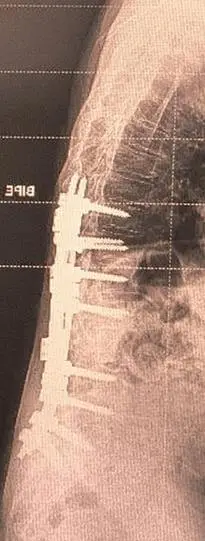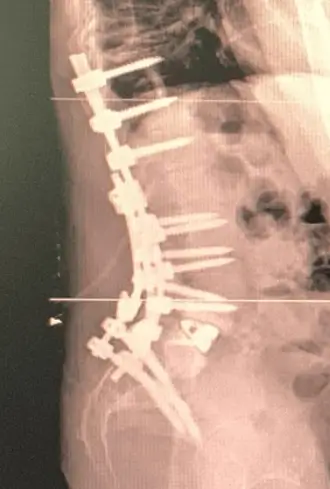Thoracolumbar Fusion: Definition, Indications, and Procedure Overview
Thoracolumbar fusion is a highly specialized surgical procedure used to treat a range of conditions affecting the thoracic and lumbar spine. When appropriately indicated and expertly performed, this surgery can stabilize the spine, alleviate pain, and significantly improve a patient’s quality of life. In this article, we provide a comprehensive overview of what the procedure entails, when it is recommended, and how it is performed, based on rigorous medical insight and extensive clinical experience.


What Is Thoracolumbar Fusion?
Thoracolumbar fusion involves permanently joining two or more vertebrae in the thoracic and lumbar spine to prevent relative motion between them. This is achieved using bone grafts and fixation devices such as pedicle screws, rods, or cages. The primary goal is to restore spinal stability in cases of advanced degeneration, fractures, deformities, or congenital and traumatic conditions.
Dr. Vicenç Gilete performs a wide range of spinal surgeries, including complex procedures for cervical myelopathy, spinal deformities, and cranio-cervical fusions, as well as artificial disc replacements. His versatility and experience are crucial when addressing high-complexity thoracolumbar cases.
Common Indications
Thoracolumbar fusion is most commonly indicated in the following cases:
- Severe vertebral fractures at the thoracolumbar junction (e.g., T12-L1)
- Progressive scoliosis or kyphosis
- Spondylolisthesis or spinal instability
- Multi-level degenerative disc disease
- Failed back surgery syndrome
- Spinal tumors or infections compromising vertebral integrity
Dr. Augusto Covaro combines advanced knowledge with a personalized approach to provide effective solutions that substantially improve patient outcomes. His surgical strategies are tailored to each individual’s anatomical and functional needs.
Surgical Approaches
The choice of approach depends on the patient’s condition, the underlying pathology, and the surgical team’s expertise:
- Posterior approach: The most commonly used technique, offering direct access to the spine and secure fixation.
- Anterior or anterolateral approach: Suitable for certain deformities or tumor resections.
- Minimally invasive techniques (MISS): Utilize smaller incisions, less bleeding, and faster recovery times.
Dr. Covaro specializes in anterolateral and minimally invasive techniques that preserve the spine’s natural curvature and mobility, resulting in fewer postoperative complications.
Minimally Invasive Thoracolumbar Surgery
Today, many thoracolumbar fusions can be performed using minimally invasive methods, which reduce muscle damage, lower infection risk, and accelerate rehabilitation. These procedures involve intraoperative navigation, endoscopy, and continuous neurological monitoring.
Dr. Gilete, currently Medical Director at Promohealth SL, offers expert diagnostics and corrective surgeries to patients with complex spinal conditions, many of whom have been underserved. In such high-demand settings, minimally invasive surgery is essential for reducing complications in at-risk patients.
Risks and Potential Complications
As with any surgical procedure, there are risks that must be carefully managed:
- Infection or bleeding
- Neurological injury
- Implant failure or nonunion (pseudarthrosis)
- Persistent pain
- Need for revision surgery
Thanks to extensive experience at renowned centers such as Instituto Teknon and Hospital Dexeus, where Dr. Covaro practices, these complications are increasingly rare when the surgery is properly planned and executed.
Recovery and Rehabilitation
Recovery after thoracolumbar fusion depends on the surgical approach, extent of the procedure, and the patient’s overall health. Minimally invasive techniques often allow discharge within a few days and a gradual return to normal activities within weeks.
For conventional or extensive fusions, a structured rehabilitation program including physiotherapy, postural re-education, and close medical follow-up is essential.
Dr. Gilete has devoted much of his career to treating patients with spinal conditions associated with connective tissue disorders such as Ehlers-Danlos Syndrome, adapting each recovery plan to the specific vulnerabilities of each patient.
When to See a Specialist
If you are experiencing chronic thoracolumbar pain, loss of strength or sensation, instability, or persistent symptoms after previous surgery, it is crucial to consult a specialized team. Early evaluation can prevent further deterioration and open the door to less invasive treatments.
At Complex Spine Institute, we employ cutting-edge technology, personalized protocols, and a multidisciplinary team led by Drs. Gilete and Covaro to provide comprehensive, effective, and safe care.
You can schedule a teleconsultation or in-person appointment in Barcelona to thoroughly assess your condition. We offer multilingual staff and experience with international patients. Contact us without obligation.